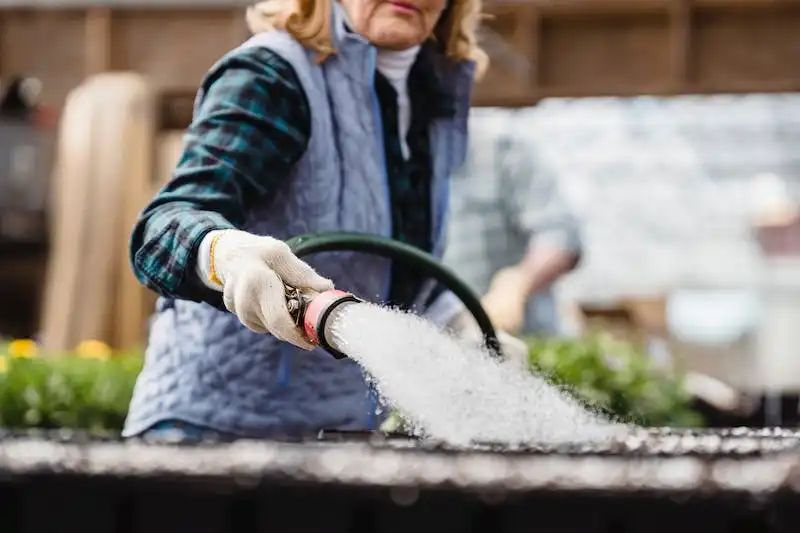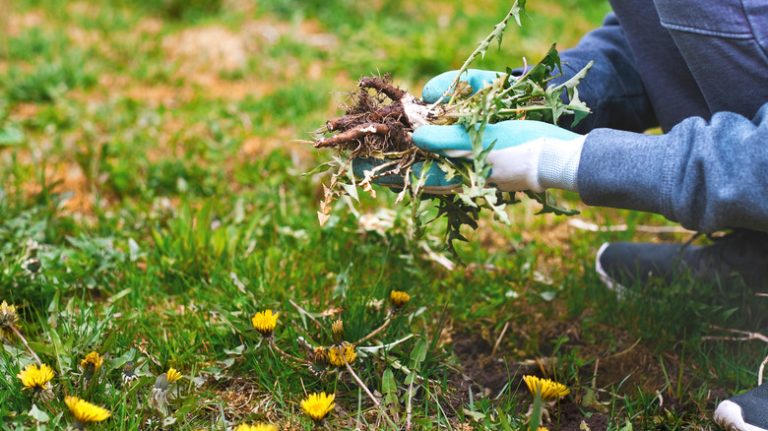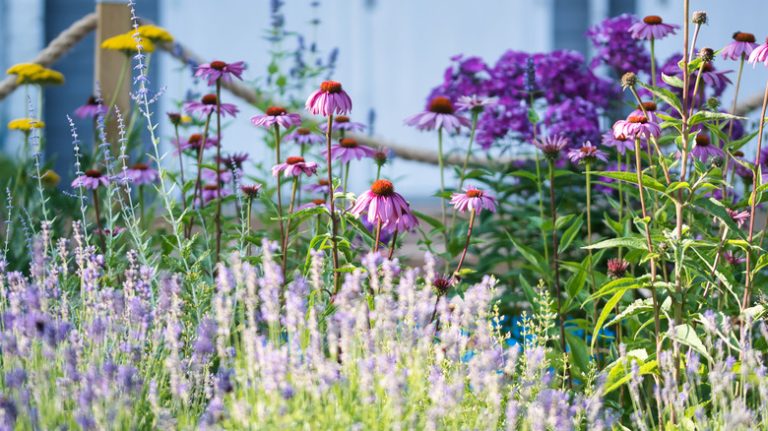Chrysanthemums, often called mums for short, are popular flowers known for their vibrant colors and beautiful blooms. Many people wonder whether chrysanthemums are perennials, meaning they can grow year after year. The answer to this question is not as straightforward as it may seem.
Chrysanthemums come in many different varieties, each with its own characteristics and growth habits. Some varieties are indeed perennials, while others are not. The hardy mums, also known as garden mums, are the most common type of chrysanthemums that are perennials and can survive the winter.
When it comes to growing chrysanthemums, gardeners need to be aware of the specific type they are planting as well as the conditions they require. Chrysanthemums are classified into different groups or classes based on their characteristics and flower form. Some popular classes include the pompon and the daisy-like mums, also called morifolium.
If you are interested in cultivating and keeping chrysanthemums as perennials in your garden, it is important to gather all the facts and information about the specific type you want to grow. While some sources on the internet may provide conflicting statements, it is always best to consult a reliable source or a professional gardener to get the most accurate information.
Disclaimer: The content presented here is for informational purposes only. This article does not provide any formal gardening advice. Please consult a professional before making any decisions about planting or growing chrysanthemums.
One reliable source of information about chrysanthemums is Darcy’s Chrysanthemum Pages, a specialty website dedicated to these beautiful flowers. This website has a wealth of information about the different types of chrysanthemums, their care and cultivation, as well as tips for creating stunning displays with these flowers.
In conclusion, while chrysanthemums can be perennials, not all varieties fall into this category. It is important to do thorough research about the specific type of chrysanthemums you are interested in before planting them in your garden. By understanding their characteristics and growth requirements, you can ensure that your chrysanthemums stay healthy and bloom year after year.
Growing Hardy Chrysanthemums
Chrysanthemums are a popular flower in gardens, known for their beautiful displays of colorful blooms. While some species of chrysanthemums are annuals, there are also hardy perennial varieties that can come back every year. If you’re a gardener looking to add some chrysanthemums to your garden, here are some facts you must know.
First, it’s important to understand the different classes of chrysanthemums. They can be categorized into various types, including pompons, spiders, and others. Each type has its own characteristics, so it’s essential to choose the one that suits your garden best.
When it comes to growing hardy chrysanthemums, there are a few things to keep in mind. Hardy chrysanthemums prefer a sunny spot in the garden with well-draining soil. They require regular watering to keep them healthy and should be planted in the spring so that they have enough time to establish their roots before winter.
There are several hardy species of chrysanthemums, but one of the most popular ones is Chrysanthemum × morifolium. This species is known for its compact growth habit, making it perfect for small gardens or front yard displays. Whether you plant them as a border or in containers, they are sure to add a splash of color to your garden.
Gardeners in colder zones should pay special attention to winter care for their hardy chrysanthemums. It’s important to mulch around the plants to protect them from freezing temperatures. The mulch will help insulate the roots and keep the plants healthy during the colder months.
Overall, chrysanthemums are a beautiful addition to any garden, and growing hardy varieties can ensure that you have beautiful displays year after year. If you’re considering adding chrysanthemums to your garden, make sure to do your research and find the best type for your specific needs.
Source: UFIFAS
Disclaimer: The statements presented in this article are not actually endorsed by Automated Insights. This article was created based on the content source mentioned above.
About Chrysanthemums
Chrysanthemums, often referred to as “mums,” are a popular choice among gardeners. These beautiful flowering plants come in a variety of colors, shapes, and sizes, making them a versatile addition to any garden or landscape.
One of the characteristics that sets chrysanthemums apart is their ability to display vibrant blooms without much effort. Whether you’re a seasoned gardener or just starting out, you’ll find that chrysanthemums are relatively easy to care for. They require regular watering, well-drained soil, and plenty of sunlight to thrive.
Chrysanthemums can be either perennials or annuals, depending on the species. While some varieties may not survive harsh winter climates, others are hardy enough to come back year after year. This makes them a popular choice for gardeners who want to enjoy their colorful displays without the hassle of replanting each season.
When it comes to planting chrysanthemums, you’ll want to choose a location in your garden that receives full sun. These plants thrive in bright light and may not flower as well in shaded areas. Additionally, chrysanthemums prefer well-drained soil, so make sure to amend the planting site with organic matter if necessary.
Chrysanthemums come in various forms, including the traditional daisy-like mums, compact pompon mums, and even specialty varieties with unique petal shapes. Whether you prefer the classic look of a garden mum or the more intricate blooms of a specialty variety, you’re sure to find a chrysanthemum that suits your preferences.
It’s worth noting that not all chrysanthemums are created equal. Some species, such as the Chrysanthemum morifolium, are more commonly grown as perennials, while others may be better suited as annuals. If you’re unsure about the specific variety you have, a quick Google search or consultation with a local gardening expert can provide helpful information.
As with any plant, it’s important to keep in mind that growing conditions and care requirements can vary. The information presented here is a general guideline, and individual plant needs may differ. It’s always a good idea to consult local gardening resources or experts for advice tailored to your specific region and climate.
In conclusion, chrysanthemums are beautiful, versatile plants that can add a pop of color to any garden. Whether you choose to grow them as perennials or annuals, they are sure to delight with their vibrant displays. Just make sure to give them the proper care and attention they need, and enjoy the beauty they bring to your outdoor space!
Five Hardy Chrysanthemums
Chrysanthemums, also known as “mums,” are a type of flowering plant that come in many different forms and colors. While some chrysanthemums are annuals that need to be replanted every year, others are perennials that will come back year after year. In this article, we will focus on five hardy chrysanthemums that are perfect for growing in your garden.
- Gentleman Jones: This chrysanthemum features large, formal petals that are a deep shade of purple. It is known for its sturdy stems and long-lasting blooms. Gentleman Jones is a perennial and can be grown in zones 5-9.
- Darcy’s Orange: With its bright orange flowers, Darcy’s Orange is sure to make a statement in your garden. This chrysanthemum is a perennial and can be grown in zones 4-9. It is also known for its strong fragrance.
- Mike’s Matchsticks: If you’re looking for a unique chrysanthemum, look no further than Mike’s Matchsticks. This variety features long, thin petals that resemble matchsticks. Mike’s Matchsticks is a perennial and can be grown in zones 5-8.
- Ufifas Red: Ufifas Red is a perennial chrysanthemum that produces vibrant red flowers. It is known for its compact form and is perfect for front-of-the-border displays. Ufifas Red can be grown in zones 4-9.
- Hardy Yellow: As its name suggests, Hardy Yellow is a tough chrysanthemum that can withstand harsh weather conditions. It produces bright yellow flowers and is a perennial that can be grown in zones 3-9.
When planting and caring for these hardy chrysanthemums, it is important to consider the specific requirements of each variety. While some chrysanthemums thrive in full sun, others prefer partial shade. Additionally, proper watering and fertilization are essential for healthy growth. If you have any questions about cultivating chrysanthemums, consult a gardening expert or your local UF/IFAS Extension office for more information.
Please note that the information presented in this article is for general gardening purposes and may not match the characteristics of all chrysanthemum species. It is always advisable to do your own research and consult reliable sources before making any decisions regarding your garden.
Specialty Chrysanthemums
In addition to the popular garden perennial chrysanthemums, there are also specialty varieties available for the avid gardener. It’s important to note that the information provided here is for general educational purposes and should not be taken as professional advice. Please consult with a gardening expert or your local extension office for specific recommendations and guidance.
Whereas the common chrysanthemums, scientifically known as Chrysanthemum morifolium, can be grown as perennials in certain zones, specialty chrysanthemums are often presented as annuals. These compact plants are valued for their unique characteristics and are often used in specific garden areas or displays.
When it comes to winter care of these specialty mums, it varies depending on the type. Some specialty chrysanthemums are indeed perennial and can survive the winter in certain zones, while others are not hardy and should be treated as annuals. Consulting specific planting guides and reputable gardening websites can help you determine what type of chrysanthemum you have and how to care for it accordingly.
Specialty chrysanthemums come in a wide range of types, from the traditional pompom and daisy varieties to the more unique and showy ones like spider and matchstick mums. Each type has its own flowering characteristics and care needs, so it’s important to choose the right chrysanthemum for your garden.
Whether you’re a seasoned gardener or just starting out, planting specialty chrysanthemums can add a special touch to your garden displays. These vibrant and beautiful flowers have been cherished by gardeners for centuries and continue to be a favorite choice for many.
It’s worth noting that not all specialty chrysanthemums are available in every location, so check with local nurseries or online gardening stores to find the varieties that are suitable for your region. Additionally, keep in mind that some specialty chrysanthemums may require specific care and maintenance to ensure their health and longevity.
In conclusion, whether you’re planting perennial or specialty chrysanthemums, it’s essential to consider their specific needs and characteristics. Do your research, consult with experts, and choose the right chrysanthemums for your garden. With the proper care and attention, these beautiful flowers can bring joy and color to your front yard or garden for many seasons to come.
Disclaimer: The information presented in this article is for general educational purposes only and should not be considered as professional advice. The UF/IFAS Extension or its associated entities is not responsible for any statements or claims made in this content.




